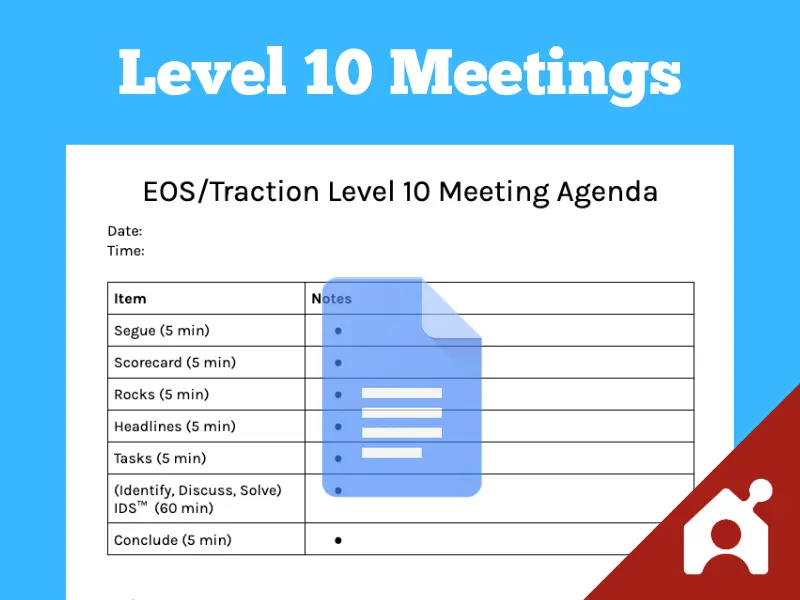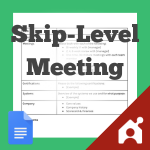Level 10 Meeting Template (& Advice From 5 Years Running It)
Access the free agenda in Docs | Download all 50 for $47
This is part of our series on meeting agenda templates. You can edit this Level 10 meeting agenda in Google Docs or Word or print it out.
Meeting Agenda Templates > Leadership Meeting Agendas > Level 10 Meeting Agenda
I was the Integrator (a role in the Entrepreneur’s Operating System) at a fully remote company for five years. For five years, I ran a Level 10 pulse meeting with the Visionary. In this article, you’ll see everything I learned while running an EOS Level 10 (L10) Meeting plus you’ll get a Traction/Level 10 meeting agenda template. Here’s the backstory.
Table of Contents
- My experience running a Level-10 Meeting
- What is an L10?
- Key components
- Level 10 Meeting agenda template
- How to run an L10 over time
My Experience Running EOS Level 10 Meetings For 5 Years
In the introduction, I mentioned how I was the Integrator at a company for five years. I actually ran the business for six years, but in the first year, I hadn’t heard of Traction or EOS (L10 meetings are a component of EOS). Then, we went on a search to find something like EOS.
Why We Chose EOS
In that first year, we broke even (not ideal) and nearly ran ourselves out of business by taking on a client we couldn’t service. We hired developers we couldn’t manage, we took on a project we didn’t deliver, and we refunded the payment altogether. It was a triple whammy – we spent about $100K on developers, we used our time on a losing project, and we refunded the $90K we thought we had brought in. As a tiny company, it nearly bankrupted us.
After that experience, we looked for a structured way to operate our business better, and we found Traction: Get a Grip on Your Business by Gino Wickman.
How It Impacted Our Business
First, we determined the Visionary and Integrator – a huge breakthrough for us. Then, we implemented all the templates, spreadsheets, and meeting agendas from the book. Within a month, we were up and running on EOS and weekly Level 10 meetings.
EOS Level 10 Meetings, specifically, helped us this way:
- Accountability: The agenda calls to revisit what you say you’ll do each week.
- Structure: The L10 agenda gives you focus for your discussions down to the minute (ie. discuss tasks for five minutes, solve problems for 60).
- Numbers: Once you build a scorecard with the correct metrics to track, you can see how to drive the business forward.
- Priority: “Rocks” free up your team to focus on the most important projects with the biggest impact (and take them to conclusion).
Over time, we adapted EOS and our Level 10 meetings to fit our company and to fit our fully remote model. But with EOS as the baseline structure, here’s how our profitability improved:
- Year 0 (before EOS): -$1k
- Year 1: $75,680
- Year 2: $142,478
- Year 3: $182,714
- Year 4: $218,529
- Year 5: $319,136
How We Adapted Our Level 10 Meetings Over Time
I firmly recommend running Level 10 meetings as determined in the book (and by the agenda you see below).
But once you get the hang of it for a year or two (and you see the results), it’s beneficial to adapt it to your team, company, and operating style. Here’s how we changed our Level 10 meetings over time:
- Length: After about a year, we went from 90 minutes down to 60. We had just two people (Visionary and Integrator) in our meetings, so we didn’t require the same amount of time that a six-person leadership team might.
- Frequency: Then, we moved our meetings to bi-weekly. Again, we were a small team and we weren’t making enough changes or solving enough of the issues within one week to discuss them again. We used the extra time to work on the issues rather than discuss them.
- Agenda Items:
- Segues: Our segues got longer and longer. As a remote team, it’s important to build non-work rapport and trust. We chatted for 15-30 minutes many times.
- Rocks: We stopped doing rocks in the way the book mentions. Once we fixed a lot of our operating issues, these elective projects got in the way of our team doing the day-to-day client work. We adjusted how we looked at these.
But to reiterate, I recommend doing Level 10 meetings in their original form for at least one year. You can adapt after that. In the sections below, you’ll learn about the original Level 10 meeting agenda.
What is a Level 10 Meeting?
The name “Level 10 Meeting” describes the pursuit of a meeting where everyone would rate it a 10/10.
These weekly meetings are rigorously timed and follow a set agenda that ensures all team members are accountable, focused, and aligned. The structure is designed to minimize time-wasting and maximize problem-solving efficiency, making these 90-minute meetings crucial for driving progress and addressing issues before they become significant obstacles.
- Weekly
- 90 minutes
- Leadership teams
- Structured/recurring/unaltered
Most importantly, the Level 10 Meeting has an agenda that fits into how you operate your business. It’s not just an ancillary gathering with ad-hoc agenda items.
Key Components of a Level 10 Meeting
Here’s a description of each agenda item that takes place.
Segue (5 minutes)
Description: EOS says this is a time for people to share good news (personally or professionally).
- Make sure everyone shows up on time (or this 5-minute period becomes your waiting room)
- Consider keeping this completely open-ended for chit-chat
- Consider expanding it once you get the hang of Level 10 meetings
Scorecard (5 minutes)
Description: Review your scorecard (5-15 key metrics) so everyone understands the current health of the business.
- Share your screen (in remote meetings) or put it up on a screen (in person)
- Make sure it is completely filled out prior to the meeting
- Assume everyone can read along and pick out highlights to look at
- Do not discuss what’s impacting the numbers (that will come later)
Rocks (5 minutes)
Description: Team members summarize progress made on their “Rocks” (quarterly, high-priority projects). The simple format is the share if each rock is on track or off.
- This is just a report – off-track rocks, discussions, and questions will all come up in IDS
- If you have lots of people in your meeting, consider rotating who reports on each (five minutes won’t be enough to do three rocks per seven people)
Customer/Employee Headlines (5 minutes)
Description: People can share customer interactions or internal company news.
- This is one of the truly positive sections of the meeting – you could move this to the end to leave on a high note
Tasks (5 minutes)
Description: A review of the to-do’s from the last meeting, checking off completed items and discussing any that weren’t finished.
- Record tasks during each meeting, then pull them up into this section for the next meeting
- Assign each one to a single person and record that in the agenda
- Only pursue tasks that can be done by the next meeting (in one week)
- Only pursue tasks that are outside of rocks
- Only pursue tasks that are not already part of some team or some person’s responsibilities
IDS (Identify, Discuss, Solve) (60 minutes)
Description: The rest of the meeting provides structured updates. This is the section where you figure things out as a team.
- Identify all of the issues facing the business right now (these might have surfaced during the previous sections)
- Rank the issues by priority, then pick the top 3
- Discuss what is causing each issue (one by one as you work through the top three)
- Solve the issue as a team once and for all
The solutions may turn into “Tasks” for next week or “Rocks” for next quarter.
Conclude (5 minutes)
Description: Review the decisions that were made and tasks that were committed to as a result of the decisions. Plus, each member should give a quick rating of the meeting’s effectiveness.
- Assign each task to one person here (it’s the key to the ongoing system)
- Commit future rock ideas (we had a tab for those in our Traction spreadsheet)
Level 10 Meeting Agenda Template
Access the free agenda in Docs | Download all 50 for $47
Purpose: A Level 10 Meeting brings structure to your recurring leadership meetings that help you drive consistent improvement.
Template:
- Attendees: Leadership team (or just the Visionary and Integrator at smaller companies)
- Frequency: Weekly, bi-weekly
- Duration: 90 minutes
Agenda
- Segue (5 min)
- Good news sharing round
- Scorecard Review (5 min)
- Review key metrics to track company performance
- Rock Review (5 min)
- Check-in on everyone’s quarterly projects
- Customer/Employee Headlines (5 min)
- Positive updates about employees and clients
- To-Do List (5 min)
- Review of action items from the previous meeting
- IDS Session (60 min)
- Identify, Discuss, and Solve a handful of key issues at the company
- Conclude (5 min)
- Recap of the meeting’s decisions and assignments
- Closing ratings from each participant on the meeting’s effectiveness
How To Maintain The Integrity Of Level 10 Meetings
If you don’t stick to the absolute principles of Level 10 Meetings (and EOS more broadly), it’s easy to slip away from the purpose. In six months (or 26 meetings), you might end up far off course.
After five years of running Level 10/pulse meetings, here are my tips for keeping Level 10 meetings effective over time:
- Recurring meetings: Book a recurring calendar appointment and do not change it.
- Show up on time: Start on time and make sure everyone gets there on time.
- End on time: The allotted time is the amount deemed to be important. Anything over takes away from doing the work.
- Stick to the agenda time limits: Do not run over time limits on agenda items.
- Record everything: You’ll want to reference things much later, so all tasks/decisions/solutions need to be recorded.
- Have one shareable agenda: Make sure everyone can access the agenda outside of the meeting, make sure it’s all in one document.
- Assign one note-taker ongoing: This was me, the Integrator.
- Leave time to “solve” (in the IDS section): I’ve seen too many times where you discuss issues and what causes issues for all 60 minutes. This weekly time slot is valuable because you have your leadership team all in one place to solve issues. Make sure you have time to do that.
- Get consensus: Share your screen the whole time (so you can get consensus on the way issues are described, the way they’ll be solved, and who will do what.
Similar Meeting Agendas
Click the links below to access another meeting agenda template.
View the complete meeting agenda template library
Download This (& More) Meeting Agendas
Want to download this meeting agenda in Google Docs or Word?
It’s part of our meeting agenda library that you can download here.





